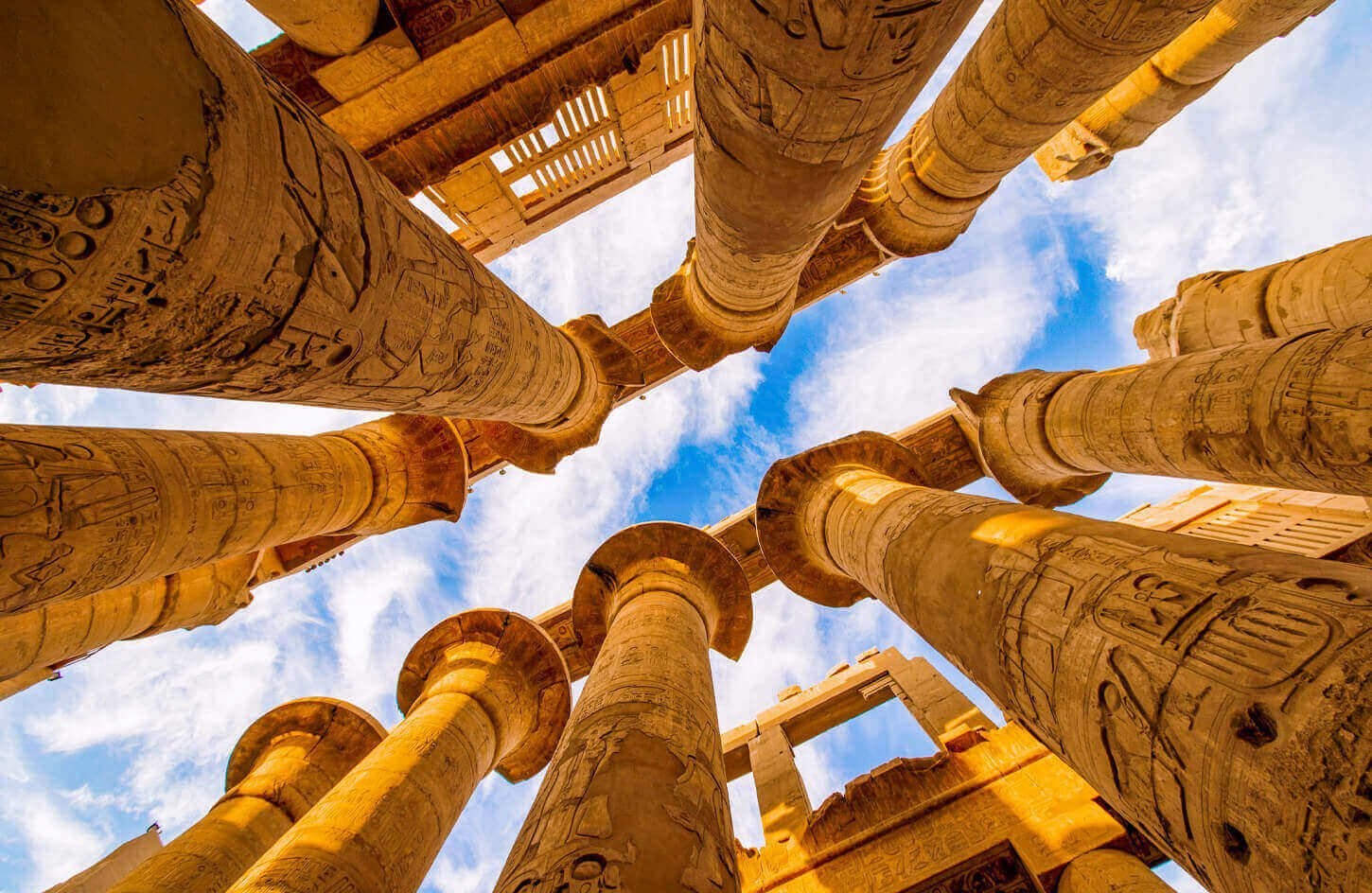
The small ancient city of Luxor is located almost in the center of Egypt, on the banks of the Nile. Because of its incredibly high concentration of famous landmarks, Luxor is often cited as the largest open-air museum in the world. Unique sights of different eras – temples, palaces, tombs of pharaohs, gigantic monuments, magnificent murals, bas-reliefs, and ancient inscriptions – annually attract tourists here. Many local attractions – the temples of Karnak and Luxor, the tombs of Thebes – were included in the UNESCO World Heritage List in 1979.
Explore our Most Popular Nile Cruise Trips:
More than 75% of all world monuments are concentrated in Luxor, so you can visit as many sights as possible by dividing your trip into several parts. Start on the East Bank of the Nile, then the West Bank.
Luxor has been divided into two parts since the time of the pharaohs. In Ancient Egypt, the East Bank was reserved for the living, so it was where the population lived and where the temples were built.
The western part, West Bank, was reserved for the dead. Soon, it was where the tombs were. Today, the eastern bank of the Nile River, the East Bank, represents most of the city. Most Luxor hotels, museums, and the Temples of Karnak and Luxor are located in this part.
Getting around the East Bank is easy; some attractions are nearby, so it is possible to walk, and there is still a wide range of taxis and carriages.
Check now what to do in Luxor, on the East Bank:
The Temple of Karnak (Karnak), with an area of more than 100 hectares, is one of the most significant building projects of Ancient Egypt. In the 20th century BC, it was built in the ancient city of Thebes on the right bank of the Nile.
The temple took 2,000 years to build because each new ruler tried to add more luxury and beauty to the building than their predecessor. The vast complex has many massive pylons, temples, chapels, the Alley of Sphinxes, halls, massive columns, statues, and the Alley of Sphinxes.
Don’t miss Reading A Quick Review of Nile Cruises in Egypt & Things to Know When Planning a Nile River Cruise in Egypt.
Luxor Temple, or The Temple of Ramses II, is the name of this building. Even though he didn’t start building it, he was the one who added to it and made his mark on it. There are several statues of Ramses II all over the temple, including four giant statues at the entrance.
The historical Luxor Temple was built on the right bank of the Nile, and the modern city’s busy streets and shops surround it. Ancient Egypt’s huge buildings still surprise us with their size, perfect shapes and proportions, and mysterious, peaceful, and harmonious atmospheres. The temple was buried in the sand for hundreds of years, and It wasn’t until the middle of the 19th century that archaeologists started to dig it up.
The Temple of Karnak and the Temple of Luxor were the two main ones of the ancient capital of the Empire, called Thebes. And to connect the two temples, an Avenue of Sphinxes was used in important religious ceremonies.
The Avenue was 2.7 km long and 70 meters wide and had about 1350 sphinxes, according to estimates by the Egyptian government. Most of the Avenue is buried, but a 350-meter section in front of the Temple of Luxor has been restored. At night, the Avenue receives special lighting, which makes the place even more beautiful.
Don’t miss Reading Tipping on Nile Cruises: Top Tips & Advice. & What to pack for Nile Cruise Trip? Top Wearing Tips
The Luxor Musem is the city’s main museum, with artifacts from Luxor’s archaeological sites. Even though there are statues and other exciting things in the museum, the most important archaeological finds were taken to Cairo and are now in the Egyptian Museum.
But even though the Luxor Museum is much smaller than the Egyptian Museum and has fewer essential pieces, it is better organized and more beautiful. It’s on our list of things to do in Luxor because of this.
The Mummification Museum in Luxor is small but exciting. In it, you’ll find out what the most important Egyptian pharaohs did before they were buried. The goal of mummification was to remove all of a person’s organs so their body wouldn’t rot.
To do this, courses and chemicals were used to keep the mummies in good shape. It’s hard to believe that some mummified bodies from over 3000 years ago are still in good condition. In the museum, there were both mummified people and mummified animals.
Felucca, A common way to see Egypt is by boat on the Nile River. Egypt is home to the world’s longest river, which flows through the country’s most important cities. Egyptian sailing boats called feluccas were the most common way to get around the Nile River.
Most people take a felucca ride in Luxor to Banana Island (Gezira el-Mozh), which is not an island but a banana farm on the other side of the river. Even though the farm isn’t beautiful, many tourists worldwide love that they can eat as many bananas as they want there. But the boat ride on the river is nice and cheap, so if you have time, you should sail along the Nile.
Check our article about Felucca Boat: A Romantic and Historical Way to Sail the Nile River.
In Ancient Egypt, the West Bank, which was on the west side of the city, was for the dead. As in Egyptian culture, they put a lot of thought into life after death. As soon as they took power, the pharaohs started building their tombs. Some of the most important historical sites, like the Valley of the Kings and the Temple of Queen Hatshepsut, are in this city.
See now what to do in Luxor – West Bank:
I think this is the best thing for tourists to see in Luxor. The New Kingdom pharaohs were buried in the Valley of the Kings. These underground tombs were made by carving passageways and rooms into the rock. Beautiful murals were made by carving and painting on the walls. They found Tutankhamun’s famous gold death mask in the Valley of the Kings.
Check our article How To Get To Egypt? Requirements for traveling to Egypt & Tips for Egypt: Things to Know Before You Travel to Egypt
Queens and princesses were buried in the Valley of the Queens. Many tombs in the Valley of the Kings aren’t as fancy as those in the Valley of the Queens. Nefertari’s grave is the most well-known in the Valley of the Queens, and she was Ramses’s wife.
The Temple of Queen Hatshepsut, The most beautiful temple in Luxor. It was built on a wide, flat area on the West Bank, the west bank of the Nile, and is close to the Valley of the Kings. It is also known as the Temple of El Deir El Bahari.
In the last few decades, the temple has been fully fixed up, which has made its front even more beautiful. Queen Hatshepsut built the temple, the first woman to rule Egypt for a long time. She said she was the daughter of the god Amon.
One of Luxor’s most famous sights is the Colossi of Memnon. All that is left of Pharaoh Amenhotep III’s tomb temple are two giant statues of him. In 1200 BC, there was an earthquake that broke down the temple. Colossi are about 20 meters tall statues and weigh about 700 tonnes. One was also destroyed by an earthquake and rebuilt by the Roman Emperor Lucius Septimius Severus.
The hot air balloon ride in Luxor is something that a lot of tourists want to do. The city in Egypt doesn’t have the charm of Cappadocia, but enough exciting things are going on to make the flight worth it. The balloon ride from Luxor takes about an hour and goes over the West Bank at sunrise.
So, if you want to go on this tour, you must get up early. The hot air balloon ride in Luxor is something that a lot of tourists want to do. The city in Egypt doesn’t have the charm of Cappadocia, but enough exciting things are going on to make the flight worth it. The balloon ride from Luxor takes about an hour and goes over the West Bank at sunrise. So, if you want to go on this tour, you must get up early.
Check our article about When is the best time for a Nile cruise? & What Clothes to Pack for the Nile cruise?
Now that you know what to do in Luxor, we’ve made a 2- to 3-day plan for the city so you can see all the most popular tourist spots. So, we suggest setting aside 2 to 3 days to look around Luxor at your own pace. The best way to make the most of your time is to take a tour that visits the city’s main sights.
You can start the day by going to the center of Luxor and some temples east of the city. So, to start the day, go to the Luxor Temple, one of the city’s most important temples.
Set aside 1 to 2 hours to learn about it at your own pace, and then go to the Temple of Karnak. Set aside at least three hours to see Egypt’s most significant temple. Go to the Luxor Museum and Mummification Museum if you still have time. Eat dinner at a restaurant in the city center to end the day.
Separate that day to learn about the Valley of the Dead, which is west of the city of Luxor. Start the day by going to the Valley of the Kings as soon as possible. Set aside 2 to 3 hours to visit the tombs of the essential pharaohs in peace.
Leave and go to the Temple of Hatshepsut, but you can learn enough about this one in an hour. The temple to Pharaoh Ramses III, Medinet Habu, is next to it. The Valley of the Queens, another vital spot, is correct before you.
On the third day of the Egypt trip, you can focus on a different plan. But if you only have two days in the city, you can fit these tours into the first or second day. This is because the tours happen very early in the morning or at sunset, which makes it easy to fit them into the schedule.
Take a hot air balloon ride from Luxor early in the morning and watch the sunrise over the Valley of the Kings. In the afternoon, you can go to the Luxor bazaar, buy souvenirs for your trip, and try Egyptian food. Take a boat ride on the Nile River at the end of the day to see the whole area.
Check our article about Felucca Boat: A Romantic and Historical Way to Sail the Nile River.
Have a Nice Trip!

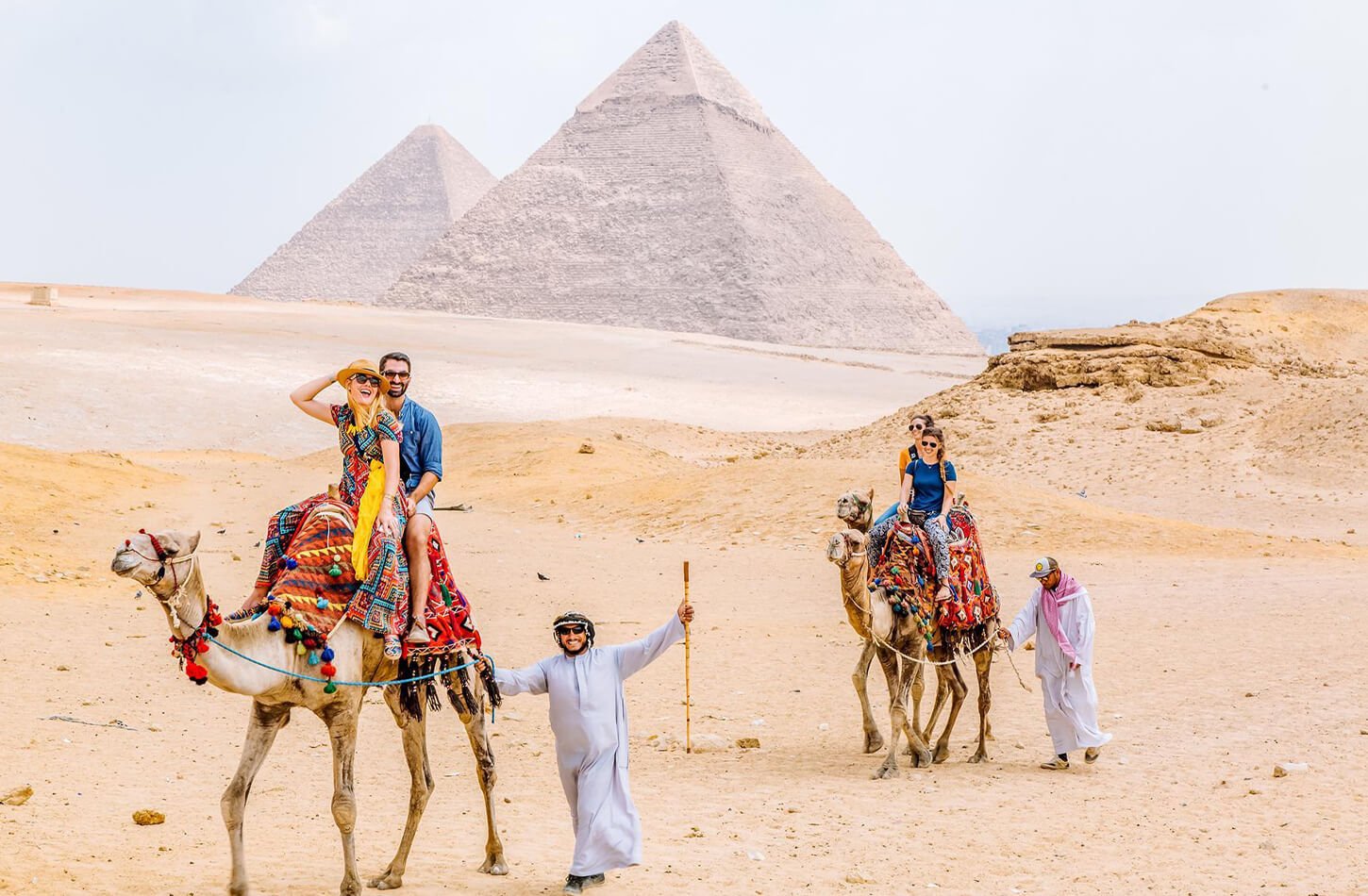
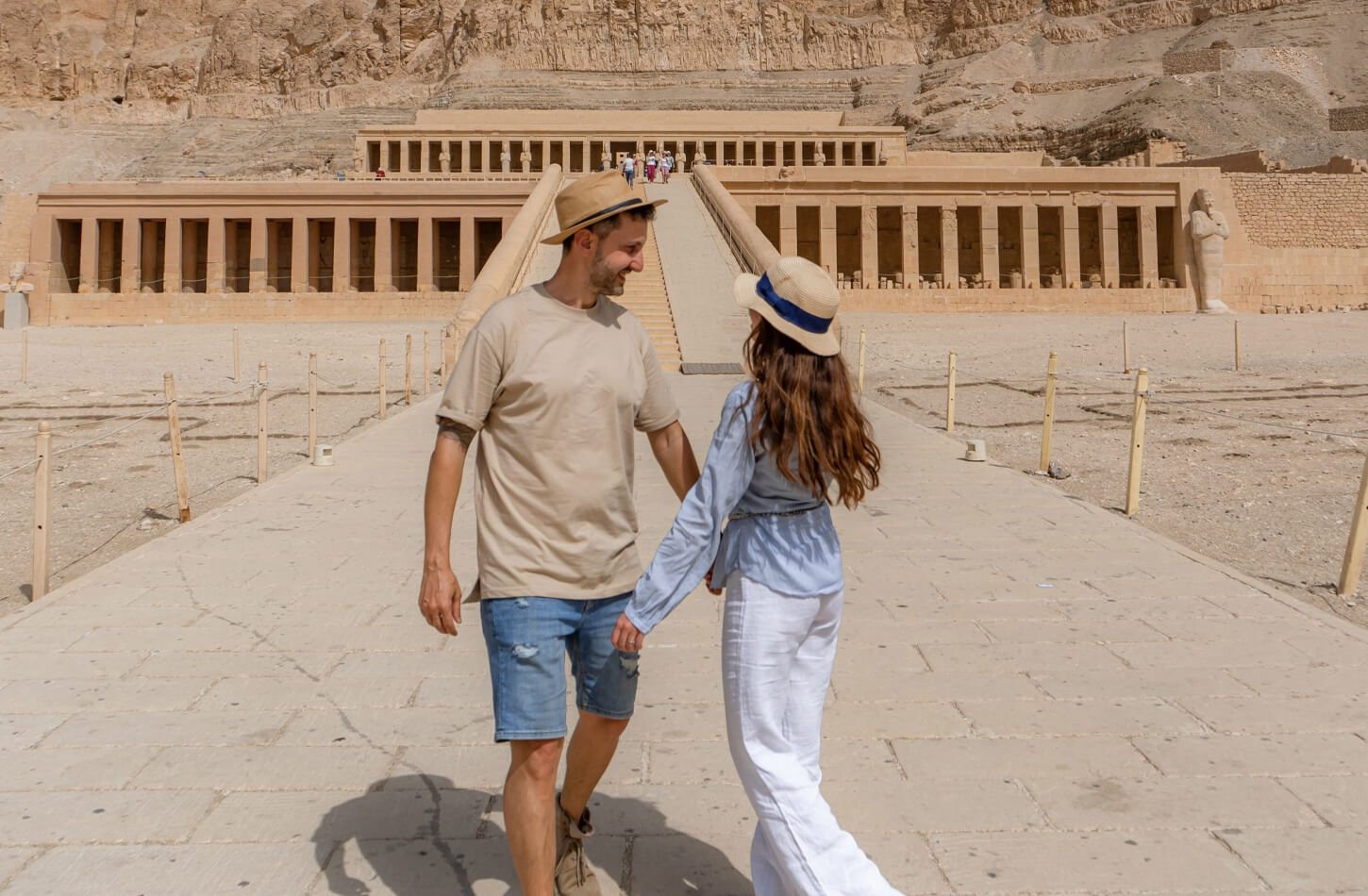
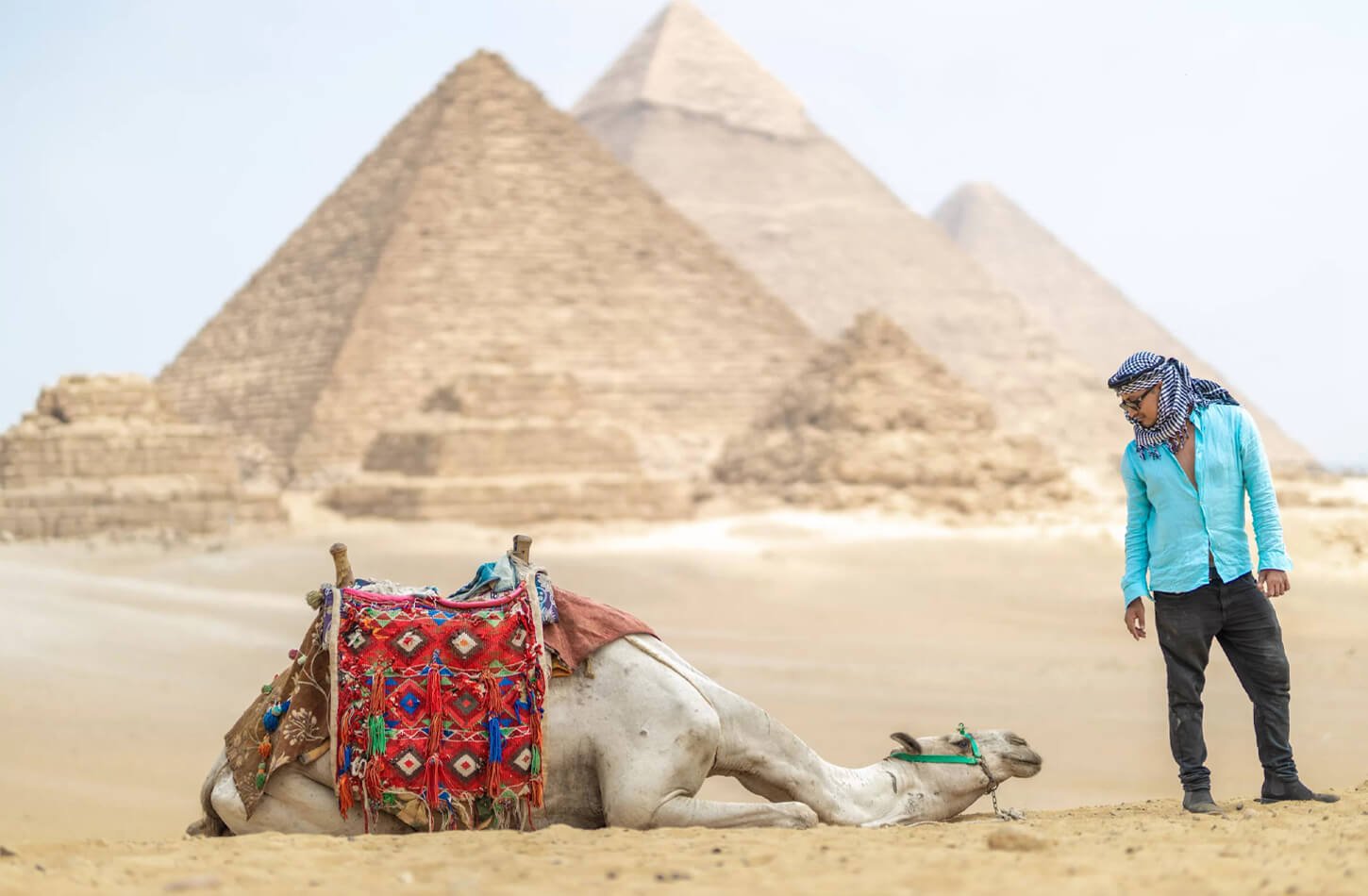
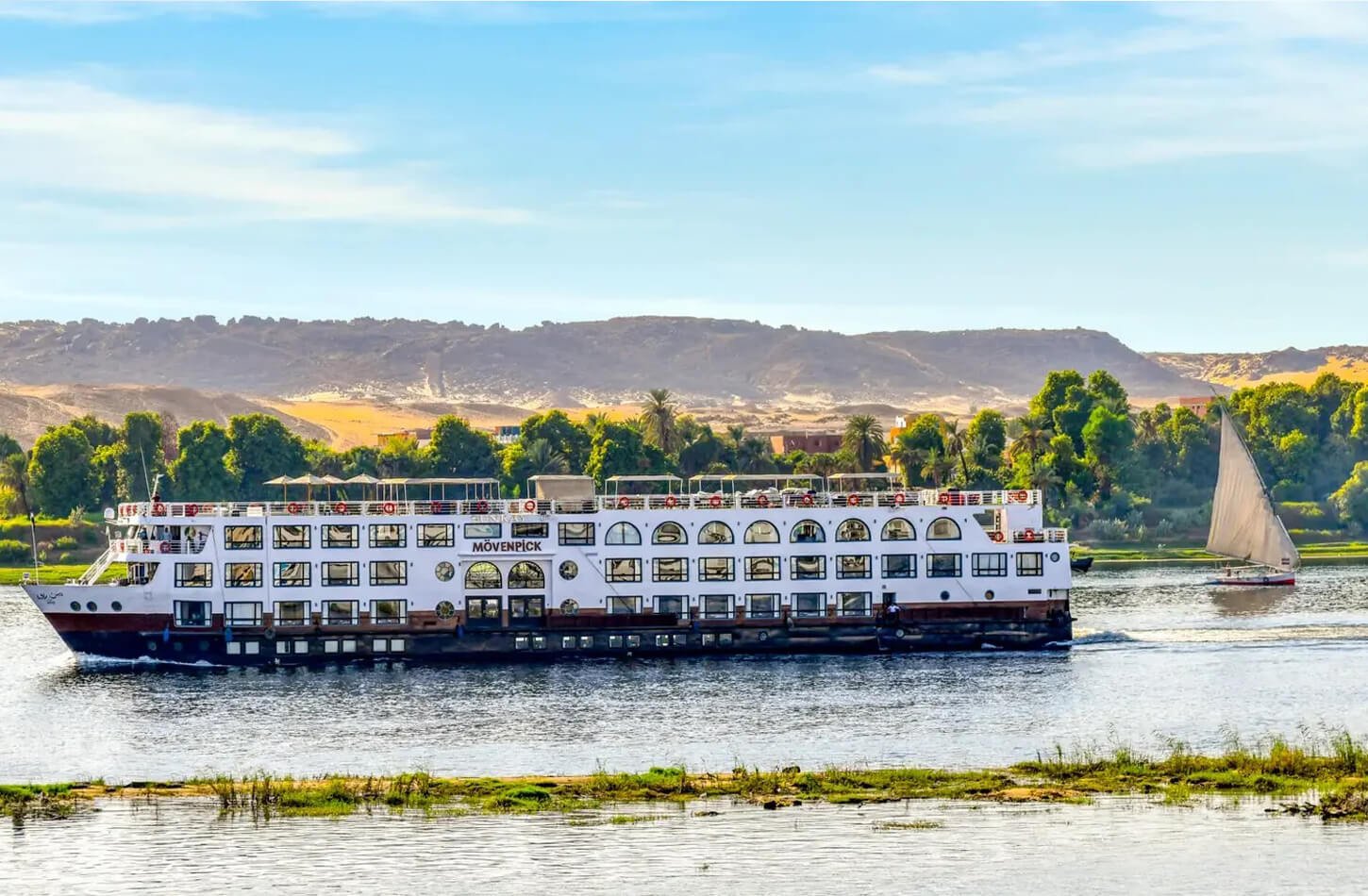


Don't just get there, get there in style.
Information
Follow Us
Payment channels
